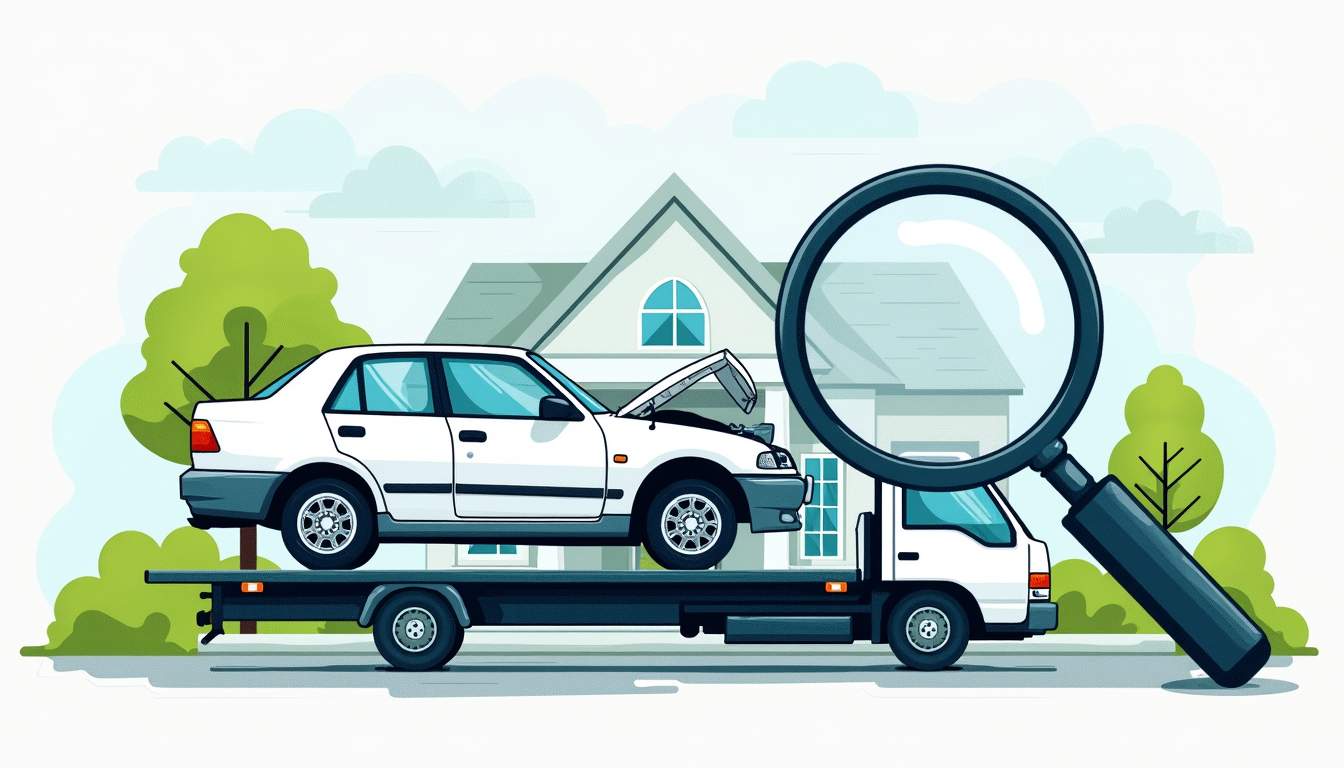Buying a salvage car can be exciting, especially if you want to save money or restore a vehicle to its former glory. However, the process of shipping a salvage car, particularly from an auction, involves several key considerations. This article will explore the ins and outs of understanding salvage cars and the complexities surrounding their shipment.
Understanding Salvage Cars
A salvage car refers to a vehicle that has been damaged and deemed a total loss by an insurance company. This classification can arise from various causes such as severe accidents, natural disasters, or theft recoveries. Understanding the implications of purchasing a salvage car is crucial prior to making any decisions.

The first important aspect to consider is that these vehicles typically come at a lower price compared to their non-salvage counterparts. While this is an attractive feature, potential buyers must thoroughly assess the extent of the damage. Not all salvage cars are economic misfortunes; many can be repaired and used efficiently. It’s essential to have a trusted mechanic evaluate the vehicle before purchase, as they can provide insights into the structural integrity and any hidden issues that may not be immediately visible.
Moreover, it’s vital for buyers to note the salvage title status. In most states, cars with a salvage title cannot be registered legally until they undergo repairs and are inspected. This means that if you purchase a salvage car, you may need to invest additional time and resources to pass the necessary inspections before you can legally drive the vehicle on public roads. Additionally, the process of obtaining a rebuilt title can vary significantly by state, so it’s advisable to familiarize yourself with local regulations to avoid any potential legal complications.
The Benefits of Buying a Salvage Car
One of the notable benefits of purchasing a salvage car is the potential for significant cost savings. Auctions often feature vehicles that are priced well below their market value, allowing wise buyers to find hidden gems. These savings can be particularly pronounced for car enthusiasts looking for projects or replacements for older vehicles. For those who possess the skills or know someone who does, a salvage car can serve as a canvas for restoration, turning a once-damaged vehicle into a unique masterpiece that reflects personal style and craftsmanship.
Furthermore, buying a salvage car offers the unique opportunity to customize and personalize your vehicle. Since many salvage cars are sold as-is, buyers have the freedom to make modifications that reflect their taste and preferences. This ability to influence the final product can be a rewarding aspect of buying a salvage car. From performance upgrades to aesthetic changes, the options are virtually limitless, allowing you to create a vehicle that stands out from the crowd. Additionally, engaging in the repair and customization process can be a fulfilling hobby, providing not just a means of transportation but also a sense of accomplishment.
Risks and Considerations
While the advantages are appealing, it is also important to consider the risks associated with salvage cars. A significant risk involves the unknowns surrounding the vehicle’s history. In many cases, the extent of the damage may not be fully documented, leading buyers to acquire a car that may require more repairs than initially expected. Obtaining a vehicle history report is crucial, as it can provide valuable information about past accidents, title changes, and service records, helping you make a more informed decision.
Another consideration includes the resale value of a salvage car. Even after repairs, these vehicles typically do not hold their value as well as clean title cars, which can impact long-term financial planning. If you envision selling the vehicle in the future, it’s wise to investigate the area’s demand for salvage cars and market trends ahead of time. Moreover, insurance companies may also treat salvage vehicles differently, often charging higher premiums or offering limited coverage options, which can affect your overall cost of ownership. Understanding these factors can help you navigate the complexities of owning a salvage car more effectively.
Shipping a Salvage Car from Auction
The process of shipping a salvage car presents its own unique set of challenges and steps. Buyers should prepare themselves for logistical issues, especially when it comes to the vehicle’s location and condition. Salvage cars can often be located far away from the buyer, requiring careful planning for their transportation.
One of the first steps in shipping a salvage car is selecting a shipping method. Traditional options include open transport and enclosed transport, each with pros and cons. Open transport is generally the more affordable option but exposes the car to environmental dangers, while enclosed transport offers protection but at a higher cost.
Selecting a Shipping Company
Choosing the right shipping company is essential for ensuring that your salvage car arrives safely and efficiently. Researching shipping companies thoroughly can make a significant difference in the quality of service received. Look for reviews from previous customers and ensure the company you choose specializes in transporting salvage vehicles.
Moreover, check if the shipping company offers insurance options for your vehicle during transportation. This added layer of protection can provide peace of mind, especially for a car that may already be in a compromised condition. It’s also beneficial to inquire about the company’s experience with handling salvage cars specifically, as they may have specialized equipment or procedures that can further safeguard your vehicle during transit.
Preparing the Car for Shipping
Before the shipping process begins, there are specific measures you should take to prepare the salvage car. Ensure that all loose parts are secured, and personal belongings are removed from the vehicle to prevent them from being lost during transport. If the car is inoperable, alert the shipping company in advance; this information will affect their logistics and how they handle the vehicle.
Additionally, it is wise to document the car’s current condition thoroughly. Take pictures of the vehicle from multiple angles to have a clear record of its state before shipping. This can be useful in the event of damage during the transport process. Furthermore, consider keeping a detailed inventory of any existing damages or issues, as this documentation can be crucial for any claims you may need to file later. Understanding the vehicle’s history, including any repairs or modifications, can also help the shipping company better assess the best way to transport your salvage car safely.
Final Thoughts
Shipping a salvage car from an auction can be a complex but rewarding experience. Understanding the nuances of salvage cars, their benefits and drawbacks, and the logistics of shipping will empower buyers to make informed decisions. With the right preparation and research, purchasing a salvage car can turn into a successful project. The allure of a salvage car often lies in its potential; many buyers are drawn to the idea of transforming a seemingly lost cause into a stunning vehicle that reflects their personal style and mechanical skills. Whether it’s a vintage model that needs a little TLC or a more modern car with minor damages, the possibilities for restoration can be both exciting and fulfilling.
Ultimately, whether you are looking to restore a classic car, save money, or simply find a unique vehicle, the journey of owning a salvage car is filled with possibilities. By approaching the process with knowledge and caution, you can navigate through the auction scene and logistics with confidence. Additionally, it’s important to consider the community and resources available to you as a salvage car owner. Online forums, local clubs, and social media groups can provide invaluable support, offering advice, sharing experiences, and even helping you find parts for your restoration project. Engaging with fellow enthusiasts can enhance your journey, providing not just technical assistance but also camaraderie and inspiration as you embark on this unique automotive adventure.

